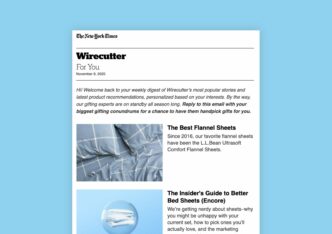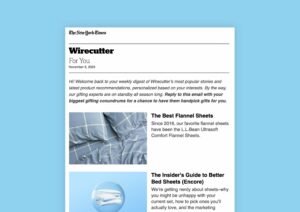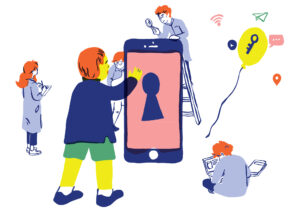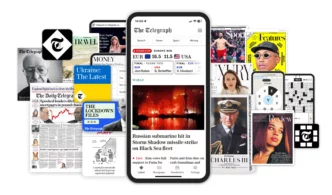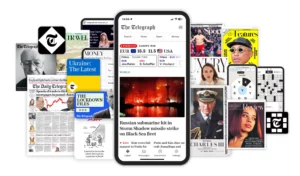

Jean-Michel De Marchi is the Editor in chief at mind Media, a French publication supporting managers working within the media, specializing in digital publishing, innovation and industry transformation.
Originally published on September 2nd, 2022 on mind Media in French. Find our more about mind Media and get a free taster here.
For news publishers prioritizing a digital subscription model, retention is at least as important (if not more) than acquisition. But this is no simple task – it requires a lot of testing, iterating and work on all levers, from content and product, to customer relations, editorial involvement and data usage, to name a few…
On average, 8-9% of digital subscribers to news media cancel their subscription within the first 24 hours, and the figure can be as high as 33% for the worst performing examples*. These figures, taken from research released in July by Piano, highlight the willingness of readers to access just a single premium article, the fear of committing to a recurring subscription, the volatility of online readers and the challenges faced by publishers to retain them.
What’s even more frightening is that some publishers are losing almost as many online subscribers as they gain, according to various publishers and service providers interviewed by mind Media. This, clearly, is too much churn.
And the stakes are high – retaining an online subscriber over time is less expensive and more profitable than converting a new reader, something that’s only becoming more true over time as acquisition costs increase year on year, not to mention the difficulty and expense of engaging these visitors enough over time to encourage conversion. Add in the current economic climate and competition between various content producers (audio & video included) and it’s clear that this isn’t an easy game for publishers to play.
Retention is therefore a priority for most news publishers today.
To achieve this work successfully, publishers must put a variety of levers to work and get all departments involved, from marketing and distribution to data teams and the newsroom.
1) Polish your product
When it comes to your premium offer, customer experience is key. You may well have quality content, but if presented in an environment that’s untidy, hard to access and unengaging, user’s won’t see its true value. Equally, a pleasant digital environment makes published content even more attractive.
Investing time and money in your product user experience is therefore essential – offer a coherent and fluid navigation, improve design, optimize page loading time to avoid latencies and ban automatic reloading, or synchronize the subscriber’s navigation from different terminals.
Product quality for subscriber retention concerns all aspects of the media company. It requires awareness at the highest level of all publishing departments, a significant budget, sufficient internal teams (or good freelancers) and a collective effort. Le Monde, Le Figaro, Mediapart and L’Equipe, which together account for more than 50% of all digital subscribers to news media in France (1.1 million out of an estimated 2.3 million digital subscribers by the end of 2021), are also the ones paying the most attention to the quality of their product.
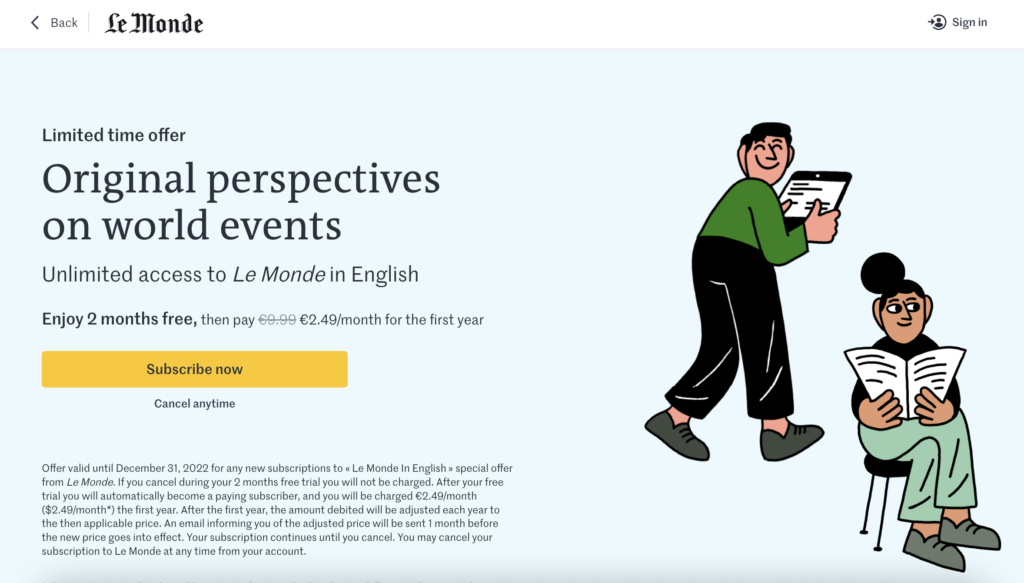
> To read next: Le Monde in English, 6 months later
2) Define and structure your relationship with subscribers
The first month is crucial for retaining subscribers. The idea is simple: the act of subscribing is the first step in the publisher-subscriber relationship. And since first impressions count, you must plan and implement a progressive onboarding process to build a deep, lasting relationship and engage your new customer. This starts from the very first minute after they convert, welcoming a new subscriber, thanking them and introducing the product that they now have access to. Emailing is the most obvious medium at this stage.
But this isn’t enough. Onboarding should continue to direct new subscribers to the content and services that will interest them the most, educating them on the product, increasing engagement, forming habits… Die Zeit has initiated a welcome process in this sense, intended to be both explanatory and personalized, maximizing on the first few days of subscription when engagement was at its highest, aiming to maintain this level for longer.
“New subscribers make heavy use of their subscription on the first day. Beginning on day two, however, engagement already levels off and leads to lower retention in the trial phase.”
Le Monde also ran research on its online subscribers, finding that nearly 30% of those who recently subscribed to their Family Offer didn’t immediately make use of the account sharing functionality. This appeared to contribute to the risk of unsubscribing. Le Monde therefore integrated an email into the subscriber onboarding process to remind subscribers of this feature.
Your first contact with subscribers is only the beginning of a series of actions that must be taken in the first few weeks (and months) to inform and engage your readers.
Some of the best in class examples of onboarding, and the first to set these processes up, are professional digital press who are more experienced in digital subscription strategies, often having a retention rate of over 80%.
These publishers have a very organized relationship with subscribers involving a welcome process that involves communication on day 1, 5 and 8. This has proven to generate a higher volume and frequency of usage that continues to develop over time. On top of this, a satisfaction questionnaire is sent 6 months later – if the evaluation result isn’t good enough, a telephone interview is organized to understand why and try to develop a closer relationship with the subscriber.
3) Encourage long-term payment
Paying a digital subscription by credit card is the most common method of payment, and by far the easiest, but it’s also the one that presents the highest risk of unsubscribing, whether voluntarily or not, because of their relatively short validity period or in the case that they’re blocked, stolen or lost.
To avoid this pitfall, increasingly more publishers are encouraging payment by direct debit or annual (over monthly) subscriptions, often promoted with a tempting discount.
For instance, Mediapart offers a classic subscription rate of 11 euros per month or 110 euros per year (i.e. two months free), plus three additional months of free subscription if paying by direct debit – i.e. a potential of 110 euros to secure a subscriber for at least 15 months. Even after this, the direct debit automatically charges the annual fee every 12 months.
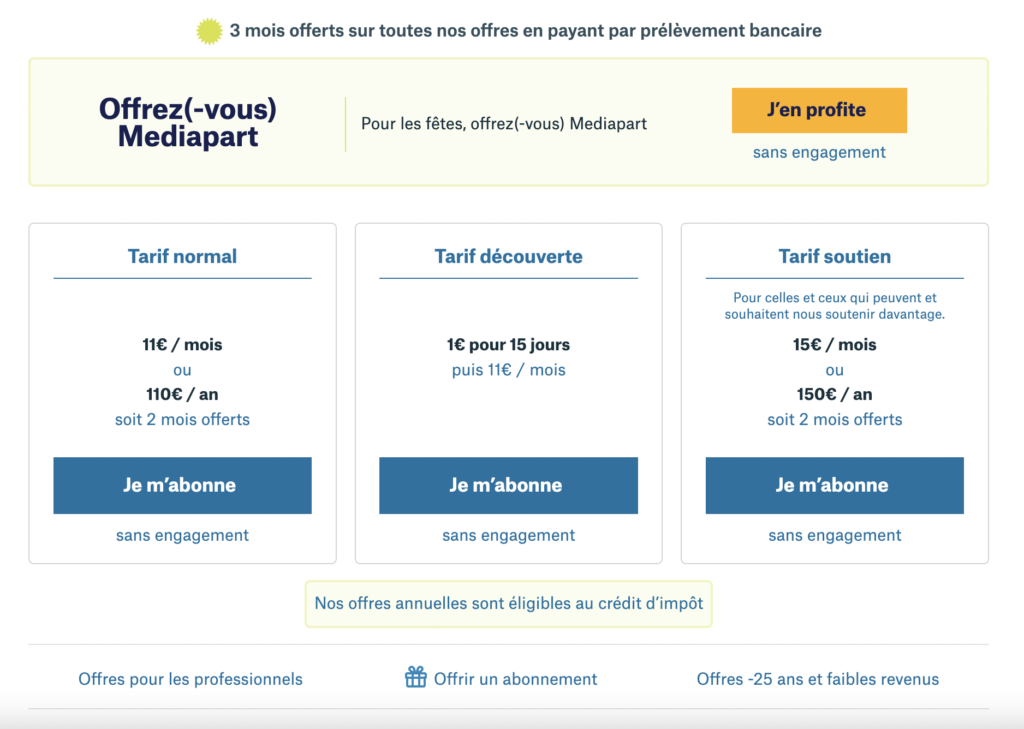
4) Use data to better understand your audience
Understanding subscriber behavior and product expectations is key to building loyalty. This can be done thanks to market research, but also (and above all) through in-depth analysis of your own subscribers, their profile and interactions with the content. Valuable metrics to measure include the most and least engaged-with content, the reasons for subscribing and churning, the content and services that generate the most engagement, and an understanding of how users tend to behave prior to unsubscribing.
This last point is particularly important, not only to identify signals that suggest a future churn, but also to put preventative measures in place to anticipate and prevent unsubscription. Infopro Digital, for instance, has automated this process with an alert sent to the customer services team if a subscriber hasn’t consulted content in over a month. If this lack of engagement continues into the following month, the subscriber is contacted to discover why this is the case and remind them of what they now have access to.
As with anything, testing out various preventive measures to analyze which increase engagement and loyalty the most is essential to then deploy the best performing option on a larger scale in the future.
5) Re-engage “sleeper” subscribers
Subscriber data can also prove useful for identifying sleeper subscribers – those who don’t make use of your product at least once a month and so have a high likelihood of unsubscribing in the future. According to Piano, an average of 40% of digital news media subscribers fall into this category. Without proactive action, 90% will remain inactive and, for any who ‘wake up’, the churn rate is at nearly 30%.
The goal is therefore to wake these subscribers without causing them to cancel their subscription. An automated but personalized email message is one option, with recommended content based on the subscriber’s interests and chosen offer to encourage them to re-engage in your site.
Le Monde and Ouest France are also testing out phone calls to these sleeper users, discovering how they can retain that specific subscriber and helping to develop a deeper, more intimate relationship. Other publishers also offer subscribers the chance to pause payment during holiday periods or move their subscription over to another offer, such as one shared by multiple individuals. You can also make use of a major news item, pushing it via email to encourage re-engagement.
6) Make use of mobile apps
With our cells in-hand throughout the day, finding your place on your subscriber’s home screen can prove a powerful tool for engaging, recruiting and retaining subscribers, as all generalist news media have noted. It’s therefore essential to offer an app for your publication or product, with an efficient, engaging user experience and features such as push notifications to continuously remind subscribers of your content and offering.
At Le Monde, 60% of digital subscribers use the app at least once a day, and often much more. Given this data, the publisher has made sure to integrate an email into their onboarding journey, encouraging new subscribers to download and make use of the app.
7) Improve your content offering with additional services
Supplementing editorial with other services, whether simple or more ambitious, is now part of digital subscriber expectations. The New York Times is of course one of the leaders in this strategy with subscribers to its online services dedicated to cooking and games representing 25% of all digital subscribers, and 10% of its online reader revenues.
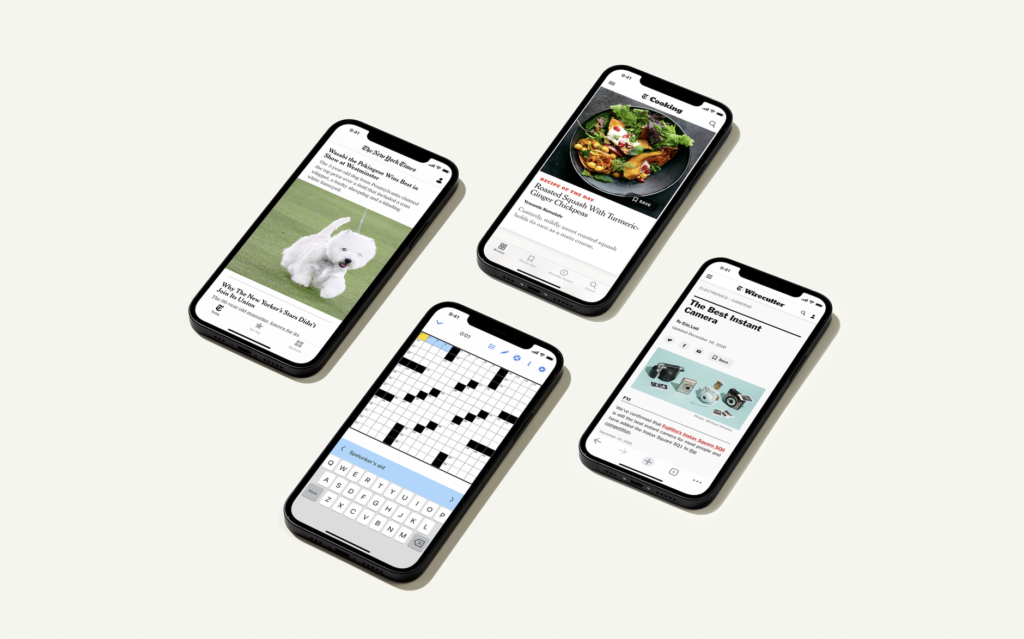
> To save for later: The New York Times dynamic paywall model analyzed
Whilst many can’t invest the same in these services as the NYT, even simple additions such as subscriber-only podcasts can support acquisition and retention efforts by differentiating your product from others on the market.
More operational features can also play this role, equally supporting habit-forming and engagement efforts. For instance, the ability to save content for later or follow topics is becoming increasingly popular amongst national online press, as well as giving subscribers the option to listen to articles in audio format. Many of the large French publishers, including Sud Ouest, Prisma Media and Le Figaro already offer this, making use of AI text-to-speech technology or even voice actors who are paid to read the text. These audio services are both a complementary service for readers and a way to develop new monetizable inventories.
8) Open up the newsroom
If the wave of participatory journalism is over, publishers can still interact more with their subscribers to build active and deep relationships. Generating interest and loyalty also requires a stronger link and line of communication between readers and editorial teams, including information on the editorial outlook (what content will soon be available to subscribers?), interest in what subscribers hope to read in the future and the ability to speak directly with journalists to dive deeper into a subject.
This can be integrated into your site and content (such as through comment sections) or set up in a more structured, regular way (such as with open meetings, webinars, masterclasses, Q&A sessions, etc).
9) Build a community
Establishing a feeling of belonging to a community is a powerful strategy for increasing subscriber loyalty. Opening up the newsroom (as detailed above) can be valuable here for giving subscribers an insider look at your publication, one that only community members have access to. This could involve chat sessions, in-person events or even articles explaining how the media functions behind-the-scenes, its economic model, etc. In 2020, Le Monde established ‘Le Monde & Vous’ (Le Monde and you), a dedicated section of their site for a monthly chat with the Head of Reader Relations.
Partnering up with other businesses and offering coupons or discounts to their products/services as part of your ‘club’ can also be valuable, equally helping to encourage non-subscribers to convert.
10) Personalize subscriber experiences
Finally, personalizing the user experience is also an important lever in building a close relationship with subscribers. Even simple touches, such as a different design when the subscriber is logged in, recommending content or adding their name to any messaging can go a long way.
Personalization can also include features controlled by the subscriber, such as the ability to build their own news feed based on interests, share content with non-subscribers or select the notifications and newsletters that they’d like to receive.
All these levers have one thing in common – consider the subscriber as a reader, but also as a customer who needs to be continuously convinced of your value. You may well have converted them in the first place, but retaining them certainly isn’t a given.
mind Media is a French publication supporting managers working within the media, specializing in digital publishing, innovation and industry transformation. Find more about mind Media and get a free test here.



